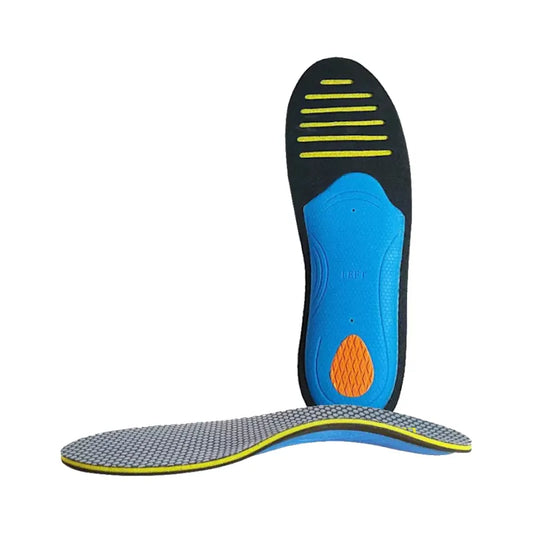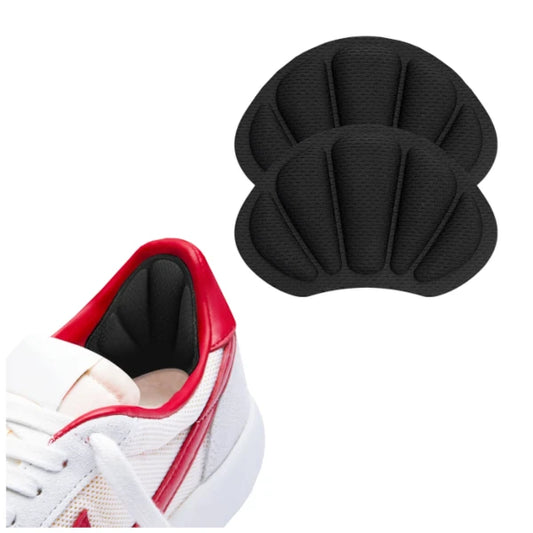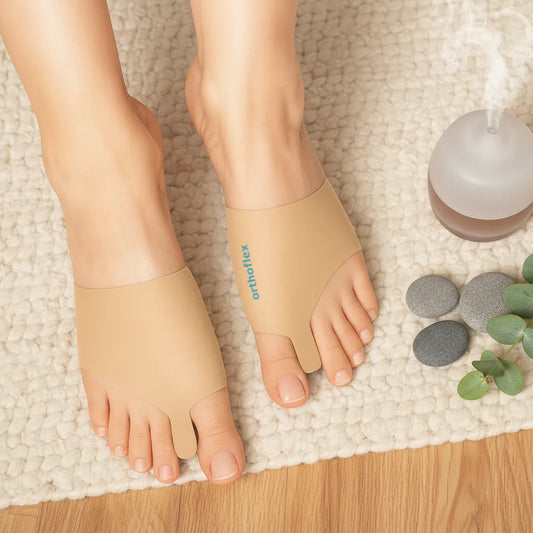
Effective Home Remedies For Plantar Fasciitis Relief
Share
Effective Plantar Fasciitis Home Remedies: Relief & Prevention
Imagine this: you wake up in the morning, eager to start your day, only to be greeted by a sharp pain in your heels. Walking becomes a struggle, and every step feels like agony. If you're tired of battling plantar fasciitis and searching for long-term relief without breaking the bank, look no further.
No more costly treatments or endless visits to specialists. With these natural and cost-effective remedies at your disposal, you can take control of your foot health right from the comfort of your own home. From stretching exercises to ice massages and supportive footwear, we've got you covered with practical tips that are easy to follow.
So buckle up and get ready to bid farewell to plantar fasciitis pain once and for all! Stay tuned for our next section where we dive into these home remedies in detail.
Understanding Plantar Fasciitis and its Causes

Deeper understanding of plantar fasciitis
Plantar fasciitis is a painful condition that affects the feet, specifically the plantar fascia ligament. This ligament runs along the bottom of the foot and connects the heel bone to the toes. When this ligament becomes inflamed or irritated, it can cause intense foot pain.
Common causes of plantar fasciitis
There are several common causes behind plantar fasciitis. One major factor is excessive strain on the plantar fascia ligaments due to activities such as running, jumping, or standing for long periods. Other causes include wearing improper footwear with inadequate arch support, having tight calf muscles or Achilles tendons, and being overweight or obese.
Risk factors for developing plantar fasciitis
Certain risk factors increase the likelihood of developing plantar fasciitis. People who have flat feet or high arches may be more prone to this condition. Individuals who engage in activities that place repetitive stress on their feet are at higher risk. Age also plays a role, as plantar fasciitis tends to occur more frequently in middle-aged individuals.
The importance of early intervention
Early intervention is crucial. Ignoring foot pain and delaying treatment can lead to further complications and prolonged discomfort. Seeking medical attention promptly allows for timely diagnosis and appropriate treatment strategies.
To summarize:
- Plantar fasciitis is characterized by inflammation or irritation of the plantar fascia ligament.
- Excessive strain on the ligaments, improper footwear, tight muscles/tendons, and being overweight are common causes.
- Risk factors include flat feet/high arches, repetitive stress on feet, and age.
- Early intervention is essential to prevent complications and alleviate pain.
Remember that understanding what exactly causes your foot pain is the first step towards finding relief. By recognizing the factors that contribute to plantar fasciitis, you can take proactive measures to prevent its onset or manage it effectively if you're already experiencing symptoms.
Treating Plantar Fasciitis at Home: Simple Steps for Pain Relief
If you're dealing with the nagging pain of plantar fasciitis, there's good news - you can manage and reduce the discomfort right from the comfort of your own home. By implementing some simple techniques and self-care practices, you can speed up your recovery process and find relief from plantar fasciitis pain.
Manage Pain with Self-Care Practices
One effective way to alleviate plantar fasciitis pain is by practicing self-care. Here are a few steps you can take to ease the discomfort:
- Rest: Give your feet a break by reducing or avoiding activities that exacerbate the pain. Resting allows your body to heal naturally and prevents further strain on the affected area.
- Ice Therapy: Apply ice packs or frozen water bottles to the bottom of your foot for about 15 minutes, several times a day. Cold therapy helps reduce inflammation and numbs the area, providing temporary relief.
- Stretching Exercises: Perform gentle stretching exercises specifically targeting the plantar fascia and calf muscles. These stretches help improve flexibility, relieve tension, and promote healing.
- Massage: Massage your foot using a tennis ball or a frozen water bottle to roll under your arches. This helps loosen tight muscles, improves blood flow, and reduces pain.
Protect Your Feet During Flare-Ups
During flare-ups of plantar fasciitis pain, it's crucial to protect your feet from further strain or injury. Here's how you can do it:
- Supportive Footwear: Wear shoes that provide ample arch support and cushioning to minimize stress on the plantar fascia. Avoid flat shoes or those with thin soles as they offer little protection.
- Orthotic Inserts: Consider using orthotic inserts or shoe insoles designed specifically for plantar fasciitis. These inserts provide additional support and help distribute pressure evenly across your feet.
- Night Splints: Use night splints that keep your foot in a stretched position while you sleep. This helps prevent the plantar fascia from tightening overnight, reducing morning pain and stiffness.
- Avoid Barefoot Walking: Steer clear of walking barefoot, especially on hard surfaces. Opt for supportive footwear or wear cushioned slippers when at home to provide extra comfort and protection.
Take Charge of Your Healing Journey
Managing plantar fasciitis pain and promoting healing is within your control. By implementing these practical tips for at-home treatment, you can take charge of your recovery process:
- Consistency: Be consistent with your self-care routine, including stretching exercises, icing, and rest periods. Consistency is key to achieving long-term relief from plantar fasciitis pain.
- Modify Activities: Adjust activities that aggravate the pain by finding alternative ways to stay active without putting excessive strain on your feet. Consider low-impact exercises like swimming or cycling.
- Weight Management: Maintain a healthy weight or work towards achieving it if necessary. Excess weight puts additional stress on the feet and can worsen plantar fasciitis symptoms.
- Listen to Your Body: Pay attention to any signals your body sends regarding pain levels during activities or treatments. Adjust accordingly to avoid exacerbating the condition.
Remember, treating plantar fasciitis takes time and patience; there's no quick fix solution. However, by following these simple steps for at-home treatment, you can effectively manage pain and expedite the healing process.
Essential Stretches for Alleviating Heel Pain from Plantar Fasciitis

To effectively relieve heel pain caused by plantar fasciitis, it's crucial to incorporate specific stretches into your daily routine. These stretching exercises can improve flexibility, reduce inflammation, and provide much-needed relief to your feet. Let's explore a range of stretches that target the affected areas and help alleviate discomfort.
Stretching Exercises for Plantar Fasciitis Relief
- Calf Stretch: Stand facing a wall with one foot in front of the other. Keep the back leg straight and lean forward, pressing against the wall. You should feel a stretch in your calf muscles. Hold for 30 seconds on each side and repeat three times.
- Plantar Fascia Stretch: Sit on a chair and cross one foot over the opposite knee. Gently pull back on your toes until you feel a stretch along the bottom of your foot. Hold for 30 seconds and repeat three times on each foot.
- Achilles Tendon Stretch: Stand facing a wall with both hands placed against it at shoulder height. Step one foot back while keeping it flat on the ground, bending the front knee slightly. Lean forward until you feel a stretch in your calf muscle and Achilles tendon. Hold for 30 seconds on each side and repeat three times.
- Toe Stretch: Sit on a chair with one foot resting on your opposite thigh. Use your hand to gently pull back each toe individually, stretching the plantar fascia underneath them. Hold for 10-15 seconds per toe and repeat three times on each foot.
- Rolling Massage: Place a tennis ball or frozen water bottle under your foot while sitting or standing upright. Roll it back and forth along the arch of your foot for several minutes to massage the plantar fascia and relieve tension.
Proper Techniques for Effective Stretches
To ensure you're getting the most out of your stretches, it's important to follow proper techniques:
- Start slowly and gradually increase the intensity of the stretch over time.
- Hold each stretch for 30 seconds or as directed by your healthcare professional.
- Avoid bouncing or jerking movements, as they can cause injury.
- Listen to your body and stop if you feel any sharp pain or discomfort.
Incorporating Stretches into Your Routine
Consistency is key. Here are some tips for incorporating these stretches into your daily routine:
- Perform these stretches at least twice a day, preferably in the morning and before going to bed.
- Consider doing them after physical activity or prolonged periods of sitting or standing.
- Set reminders on your phone or use sticky notes as visual cues to help you remember.
- Make it a habit by associating the stretches with other daily activities, such as brushing your teeth or watching TV.
By regularly incorporating these essential stretches into your routine, you can improve flexibility, reduce inflammation, and experience long-term relief from heel pain caused by plantar fasciitis.
Exploring Natural Remedies for Plantar Fasciitis Relief

If you're dealing with the discomfort of plantar fasciitis, you'll be glad to know that there are a variety of natural remedies that can help alleviate your symptoms. From essential oils to herbal remedies and alternative therapies, these options can provide relief without relying solely on medication or invasive treatments. By incorporating these natural remedies into your treatment plan, you may find significant improvements in managing plantar fasciitis.
Healing Properties of Essential Oils
Essential oils have gained popularity for their healing properties, and they can also be beneficial for relieving plantar fasciitis symptoms. Some essential oils known for their anti-inflammatory and pain-relieving properties include:
- Peppermint oil: Known for its cooling effect, peppermint oil can help reduce inflammation and soothe foot pain.
- Lavender oil: With its calming scent, not only promotes relaxation but also has analgesic properties that can alleviate discomfort.
- Eucalyptus oil: This oil has anti-inflammatory properties and can provide a soothing sensation when applied topically.
To use essential oils for plantar fasciitis relief, mix a few drops with a carrier oil like coconut or jojoba oil and massage it onto the affected area. You can also add a few drops to warm water for a relaxing foot soak.
Herbal Remedies for Plantar Fasciitis
Herbal remedies have been used for centuries to treat various problems, including foot pain. Some herbs known to have anti-inflammatory properties that may benefit those with plantar fasciitis include:
- Turmeric: This spice contains curcumin, which has potent anti-inflammatory effects. Adding turmeric to your diet or taking curcumin supplements may help reduce inflammation.
- Ginger: Known for its warming properties, ginger can improve blood circulation and alleviate pain associated with plantar fasciitis.
- Arnica: Often used topically in the form of creams or gels, arnica can help reduce inflammation and relieve pain.
Before using herbal remedies, it's essential to consult with a healthcare professional, especially if you have any underlying health conditions or are taking medications that may interact with them.
Alternative Therapies for Plantar Fasciitis
In addition to essential oils and herbal remedies, alternative therapies can also provide relief from plantar fasciitis symptoms. Some popular options include:
- Acupuncture: This ancient Chinese practice involves inserting thin needles into specific points on the body to alleviate pain.
- Massage therapy: By targeting the muscles and tissues in the foot, massage therapy can help improve circulation, reduce tension, and relieve pain associated with plantar fasciitis.
- Physical therapy: Working with a physical therapist can help strengthen the muscles surrounding the foot and ankle, improving stability and reducing stress on the plantar fascia.
Exploring these alternative therapies alongside traditional treatments like stretching exercises recommended by your doctor can enhance your overall recovery process.
By incorporating natural remedies into your treatment plan for plantar fasciitis relief, you have more options to explore beyond conventional medication or invasive procedures. However, it's important to remember that what works for one person may not work for another. It may take some trial and error to find the best natural remedy that suits your needs and preferences. Always consult with a healthcare professional before starting any new treatments or therapies to ensure they are safe and suitable for you.
Using Heat and Ice Therapy to Soothe Plantar Fasciitis Pain
Applying heat and ice therapy can be an effective way to reduce pain and inflammation associated with plantar fasciitis. By understanding when to use heat or cold therapy, you can optimize your efforts in managing the symptoms of this condition.
Cold therapy is best used during the initial stages or when you're experiencing acute pain. Applying an ice pack or soaking your feet in iced water can help decrease blood flow, numbing the painful area and reducing inflammation. An ice pack or even an ice cube wrapped in a cloth can be applied directly to the affected area for about 15-20 minutes at a time. It's important not to apply ice directly to the skin as it may cause frostbite. Remember to always wrap it in a cloth or use an ice pack designed for therapeutic purposes.

On the other hand, heat therapy works wonders for relaxing the structure and alleviate discomfort. You can also try using a heating pad or taking a warm-shower before engaginn in any physical activity involving your feet. It’s best used after the acute stage of the injury, when you stop feeling constant pain.
To enhance the effectiveness of these therapies, you can incorporate massage into your routine. Gently massaging the bottom of your foot using circular motions with your fingers or a tennis ball can provide relief by stretching out the tight muscles and breaking up any adhesions in the fascia.
Another option worth considering is using night splints that keep your foot flexed while you sleep. These splints help stretch out the plantar fascia overnight, providing long-term relief from morning heel pain.
If home remedies aren't providing sufficient relief, it might be beneficial to consult with a healthcare professional who may recommend additional treatments such as cortisone injections or kinesiology tape application.
While heat and ice therapy are effective methods for managing plantar fasciitis pain at home, there are some precautions to keep in mind. It's important not to overuse these therapies, as excessive heat or cold can lead to burns or tissue damage. Always follow the recommended time frames for application and give your skin a break between sessions.
It's advisable to avoid using heat or ice therapy if you have circulatory issues, diabetes, or any other condition that affects blood flow or sensation in your feet. In such cases, consult with a healthcare professional before attempting these remedies.
By incorporating heat and ice therapy into your daily routine, along with other self-care practices like wearing supportive shoes and using compression socks, you can effectively manage the pain and inflammation associated with plantar fasciitis.
Proper Footwear Selection and Supportive Insoles for Plantar Fasciitis Relief
Choosing the right footwear can make a significant difference in managing plantar fasciitis pain. Your shoes play a crucial role in supporting your feet and reducing strain on the plantar fascia. Here are some key features to look for when selecting shoes suitable for individuals with plantar fasciitis:
Cushioning and Arch Support
Look for shoes that provide ample cushioning and arch support. The extra cushioning helps absorb shock while walking or running, reducing stress on the heel and arch. Arch support is essential as it helps distribute weight evenly across the foot, alleviating pressure on the plantar fascia.
Heel Stability and Firmness
Opt for shoes with a stable heel counter that holds your heel securely in place. This stability prevents excessive movement of the foot, reducing strain on the plantar fascia. Choose shoes with firm soles that offer good support and prevent overpronation (rolling inward) or supination (rolling outward) of the foot.
Roomy Toe Box
Ensure that your shoes have a roomy toe box to allow your toes to move freely. Tight-fitting shoes can exacerbate plantar fasciitis symptoms by putting additional pressure on the forefoot area. A wider toe box also accommodates any swelling or inflammation that may occur due to plantar fasciitis.
Athletic Shoes Designed for Plantar Fasciitis
Consider investing in athletic shoes specifically designed for individuals with plantar fasciitis. These shoes often come with built-in features such as extra cushioning, arch support, and heel cups that provide targeted relief for those suffering from this condition.
In addition to proper footwear selection, using supportive insoles can be an effective measure for pain relief:
Custom Orthotics or Shoe Inserts
Custom orthotics or shoe inserts are specially designed to provide additional support and cushioning for the feet. These inserts can help correct biomechanical imbalances, improve foot alignment, and reduce stress on the plantar fascia. They are available in various materials and can be customized to fit your specific foot shape and needs.
Benefits of Supportive Insoles
Using supportive insoles offers several benefits for individuals with plantar fasciitis:
- Enhanced shock absorption: Insoles with cushioning properties absorb impact forces, reducing strain on the plantar fascia.
- Improved foot alignment: Supportive insoles help align the foot properly, promoting better gait biomechanics and reducing excessive pressure on specific areas.
- Added arch support: Insoles with built-in arch support provide extra stability to the arches, alleviating tension on the plantar fascia.
- Increased comfort: Cushioned insoles offer a comfortable padding that helps relieve pain and discomfort associated with plantar fasciitis.
By making informed choices regarding footwear and incorporating supportive insoles, you can take significant steps towards better foot health. Remember to consult with a healthcare professional or podiatrist to determine which footwear options or insole supports are best suited for your individual needs.
Empowering Yourself with Home Remedies for Plantar Fasciitis Relief
Congratulations! You have taken the first step towards finding relief from the nagging pain of plantar fasciitis. By understanding the causes and symptoms of this condition, you are already on your way to a healthier, pain-free life. But why stop there? From simple steps like resting and icing your feet to incorporating essential stretches and natural remedies into your routine, you now have a range of tools at your disposal.
Now it's time to take action! Start implementing these remedies today and watch as the pain gradually diminishes. Remember, consistency is key. Make these practices a part of your daily routine and give yourself the gift of healing. Don't let plantar fasciitis hold you back any longer - take charge of your health and reclaim your freedom to move without pain!
FAQs
Can home remedies completely cure plantar fasciitis?
While home remedies can provide significant relief from plantar fasciitis symptoms, it's important to note that they may not completely cure the condition. Plantar fasciitis is a complex issue that often requires a multi-faceted approach for long-term resolution. However, by consistently following home remedies along with professional guidance, you can greatly reduce pain and discomfort.
How long does it take for home remedies to show results?
The timeframe for seeing results may vary depending on individual factors such as severity and adherence to the treatment plan. Some individuals experience relief within a few weeks of starting home remedies, while others may require several months. Patience is key during this process, so stay committed to your chosen remedies and consult with a healthcare professional if needed.
Are there any risks associated with using home remedies?
In general, most home remedies for plantar fasciitis are safe and pose minimal risks. However, it's essential to listen to your body and discontinue any remedy that worsens your symptoms or causes additional discomfort. If you have any underlying health conditions or concerns, it's always wise to consult with a healthcare professional before starting any new treatment.
Can I continue exercising while using home remedies?
Exercise can be beneficial for plantar fasciitis recovery, but it's crucial to choose activities that minimize stress on the feet. Low-impact exercises like swimming, cycling, or yoga can help maintain overall fitness without exacerbating the condition. Remember to warm up properly, wear supportive footwear, and modify activities as needed to avoid further strain on the plantar fascia.
When should I consider seeking professional medical help?
If home remedies fail to provide adequate relief after a reasonable period of time or if your symptoms worsen despite your efforts, it may be time to consult with a healthcare professional. They can assess your condition more thoroughly and recommend appropriate treatments such as physical therapy, orthotics, or in severe cases, surgery.
Author Bio

Marlene Carvalho
Certified Sports Physiotherapist of Elite and Olympic athletes; Performance Coach to racing drivers
Marlene Carvalho is a sports physiotherapist passionate about all things sports.






